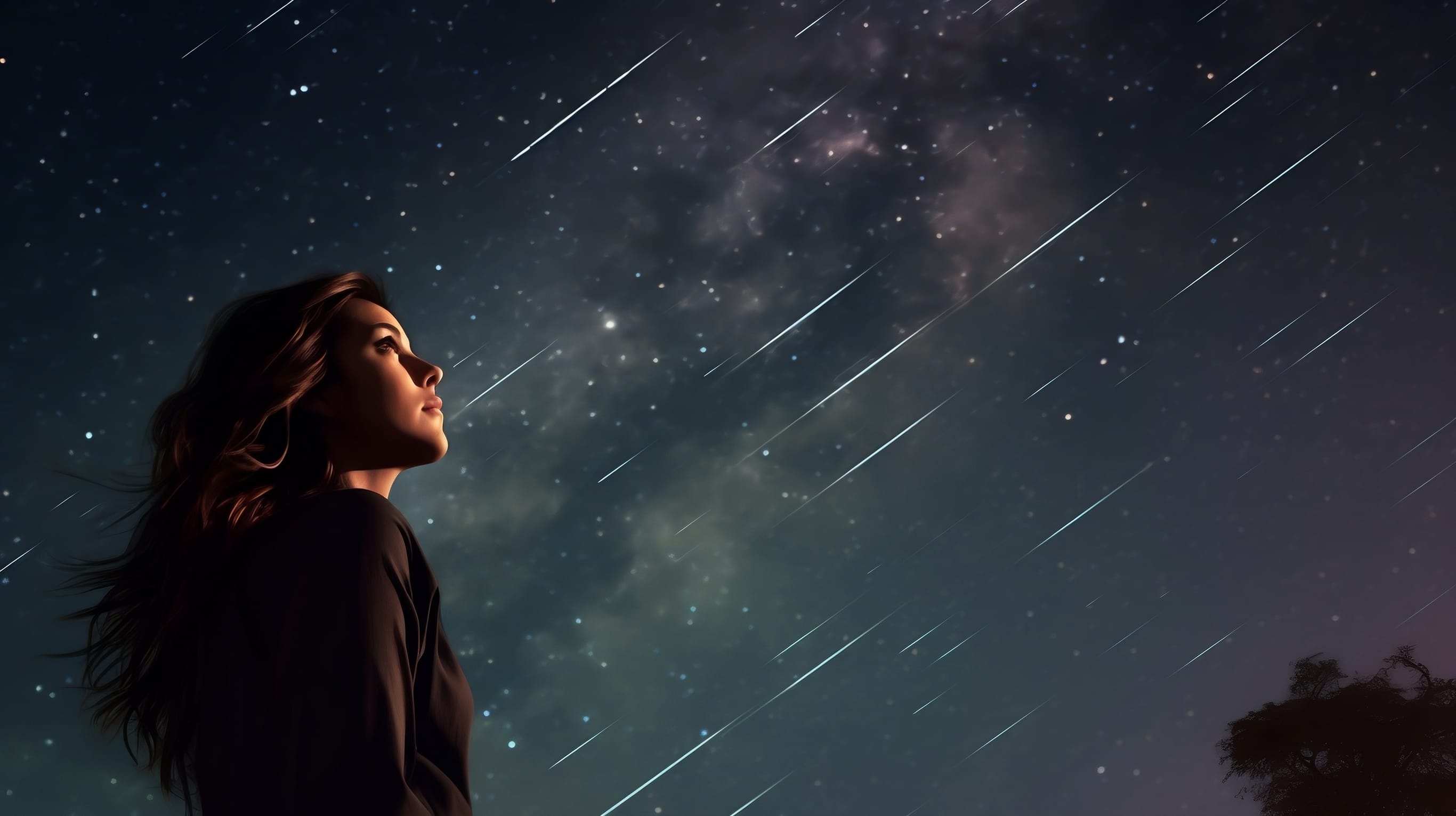January Meteor Showers 2026: When and Where to Watch
In January 2026, two notable meteor showers will reach their peaks of activity: the Quadrantids and Gamma-Ursae Minorids. Read on to learn when you can see them. To find out the best time for observations in your location, use the free Sky Tonight app.
Contents
- January 3: Quadrantids
- January 18: Gamma-Ursae Minorids
- How to see the most shooting stars in January 2026?
- Shooting stars in January 2026: Conclusion
January 3: Quadrantids

- Meteors/hour: 80 (only ≈10 visible due to Full Moon)
- Moon illumination: 100%
- Active: Dec 28 – Jan 12
- Radiant location: Constellation Bootes (near the border with Hercules)
- Best visible from: Northern Hemisphere
- Visibility forecast: In 2026, the Quadrantids peak under a Full Moon, which will significantly reduce the number of visible meteors. Only the brightest fireballs will stand out through the moonlight. The peak is expected around 21:00 GMT on January 3 and lasts for only about six hours, so timing is crucial.
- Description: The Quadrantids are one of the strongest meteor showers of the year, capable of producing over 100 meteors per hour at their best. However, their sharp and short peak makes them easy to miss. Learn more about this unique meteor shower in our detailed article.
January 18: Gamma-Ursae Minorids
- Meteors/hour: 3
- Moon illumination: 0%
- Active: January 10–22
- Radiant location: Constellation Ursa Minor
- Best visible from: Northern Hemisphere
- Visibility forecast: In 2026, observing conditions for the Gamma-Ursae Minorids are ideal, since the peak occurs the same day as the New Moon. Even though the Gamma-Ursae Minorids are a modest shower, this year offers one of the best opportunities to catch its few meteors.
- Description: Gamma-Ursae Minorids (γ-Ursae Minorids) are a weak meteor stream with a peak rate of only three meteors per hour. The International Meteor Organization began monitoring it fairly recently, in 2017. The shower remains under study, and its exact activity period and characteristics may change as new data emerge.
How to see the most shooting stars in January 2026?
For any meteor shower, the higher the radiant in the sky, the more meteors you are likely to see. If you want to know the position of the radiant for your location, use our stargazing app Sky Tonight:
- Open the app and type the name of the meteor shower in the search field.
- Tap on the radiant of the fitting meteor shower and go to the “Events” tab.
- The middle time in the “Visible Passes” section indicates the time of the radiant’s highest position in the sky. Tap on it to see where the radiant will be on the sky map.
For more tips on observing meteor showers, read our dedicated article. And take our quiz about shooting stars to test your meteor hunting skills!

Shooting stars in January 2026: Conclusion
The Quadrantids are the month’s main meteor shower in terms of intensity, but the Full Moon in the sky will significantly reduce visibility. Still, it’s worth stepping outside on January 3 to try your luck — even a few fast fireballs can make the effort worthwhile.
The Gamma-Ursae Minorids, by contrast, will peak under a New Moon on January 18, providing excellent dark-sky conditions. While this faint shower produces only about 3 meteors per hour, patient observers in the Northern Hemisphere might still spot a few streaks across the winter sky.
Use the Sky Tonight app to track both showers, check radiant positions, and find the best viewing times for your location. We wish you clear skies and happy observations!
